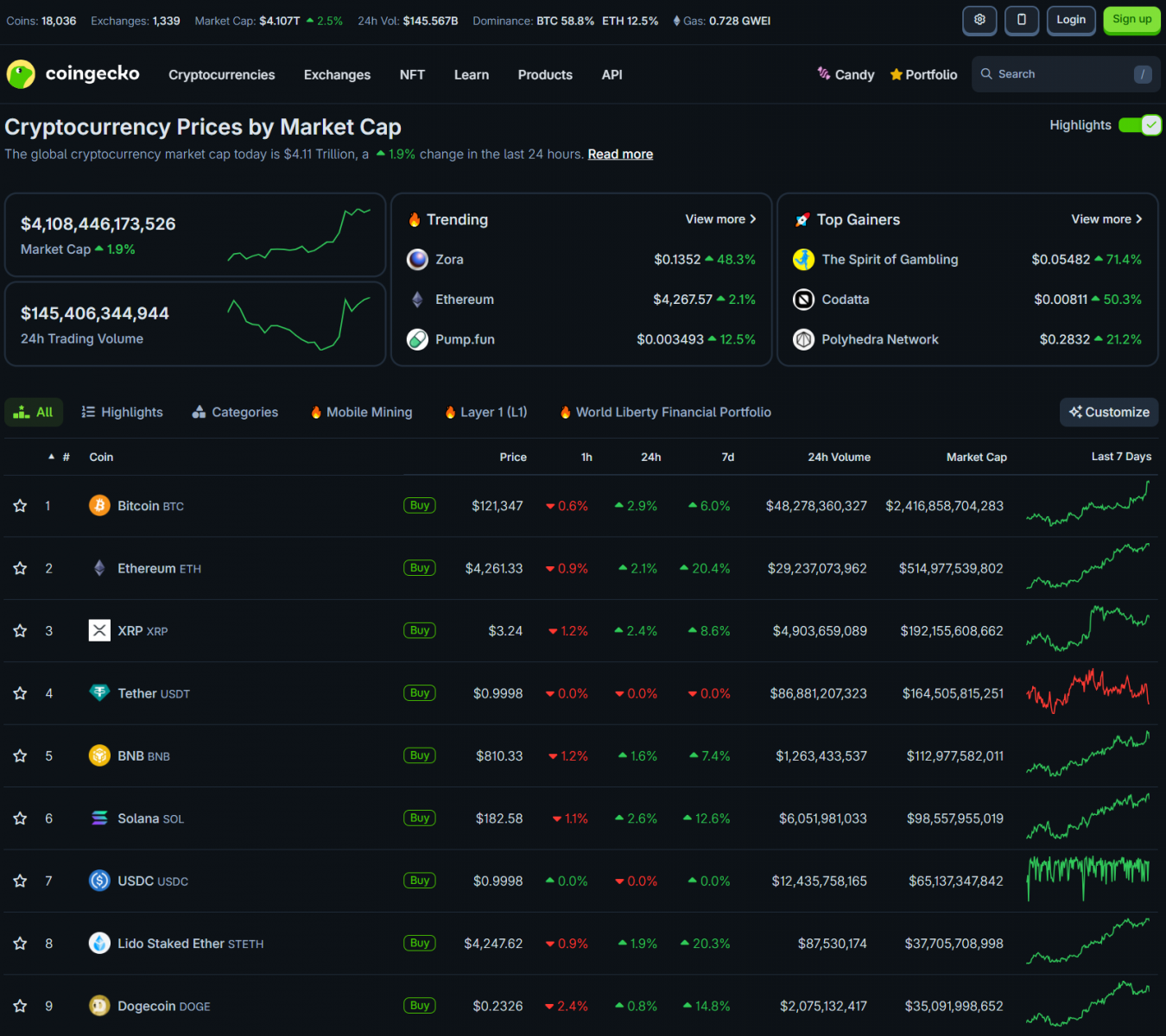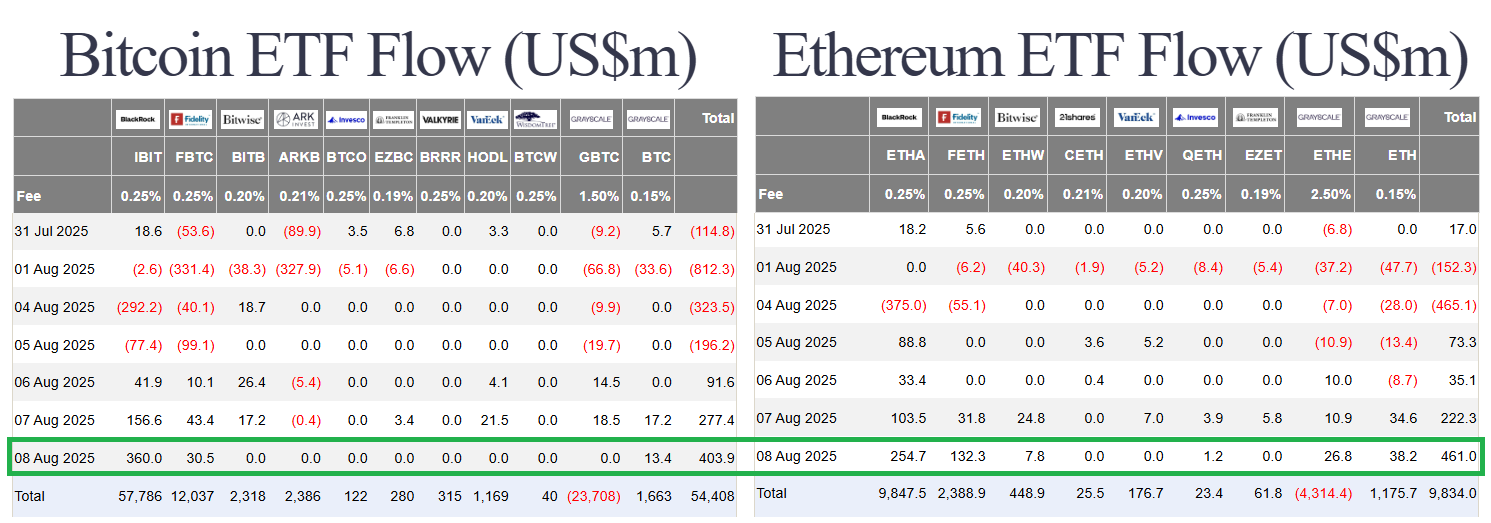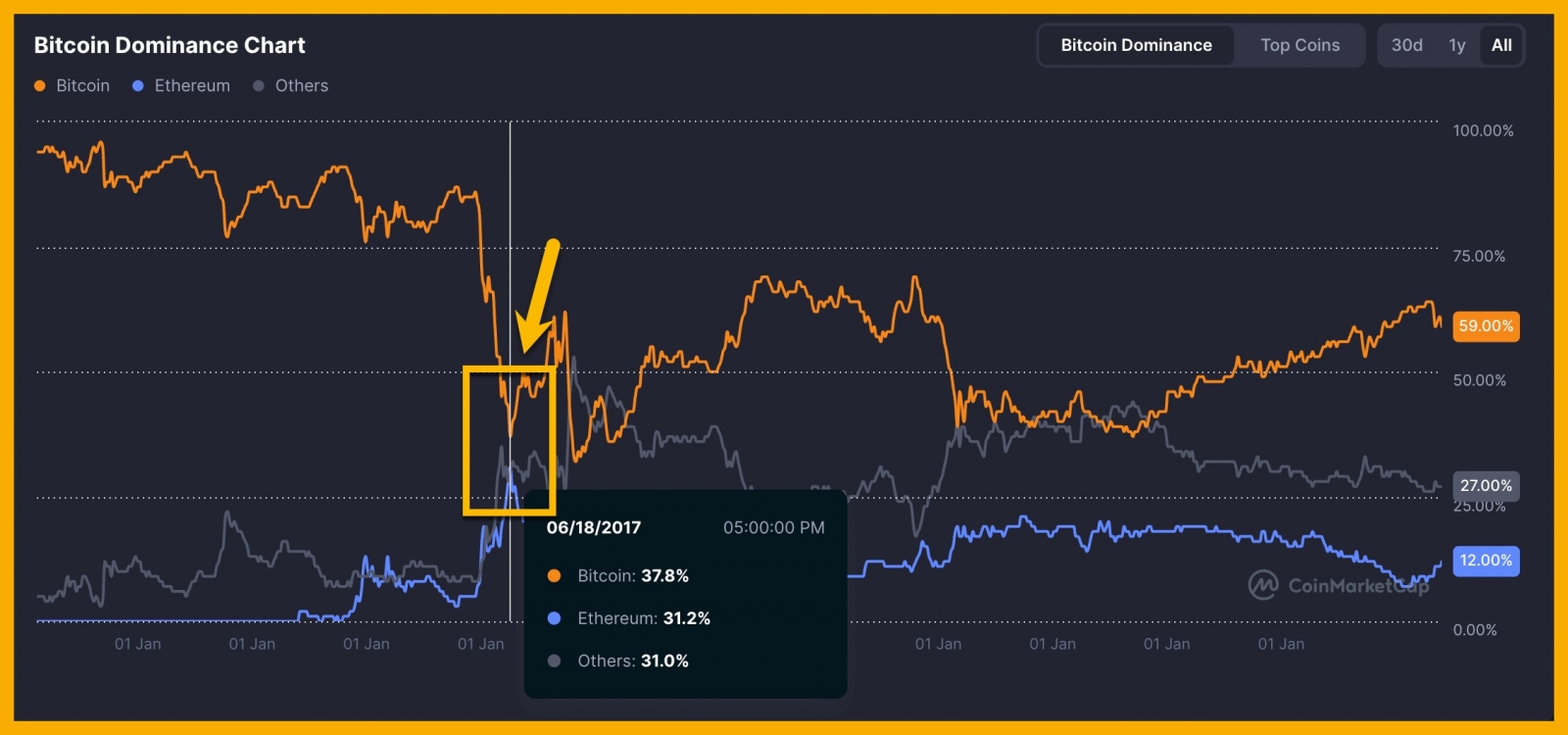Bitcoin is very close to its All-Time High (ATH) and could break its previous peak to set a new one at any moment. The crypto market is more vibrant, but the debate over Bitcoin's 4-year cycle continues, with many questioning if it still applies to BTC.
Market Overview
This week, the market will receive a wealth of information, including Australia's interest rate decision, key US inflation data (CPI and Core CPI), speeches from several regional Fed Presidents, US jobless claims, and the PPI (Producer Price Index). The week concludes with a meeting between President Trump and Russian President Vladimir Putin in Alaska on August 15th.

JPMorgan forecasts that the Fed will begin cutting interest rates in September, with a total of four 0.25% reductions this year, bringing the rate down to 3.25–3.5%.
On Sunday (August 10th, US), US stock futures showed slight gains across all three indices, with the Dow Jones futures seeing the largest increase at 0.16%. Oil and gold futures both saw minor corrections, settling around $63 per barrel and $3451 per ounce, respectively.
Bitcoin has moved very close to its peak and could break its ATH at any time; at one point, the BTC price surpassed $121,000. Ethereum also saw strong growth, rising above $4200. The overall crypto market capitalization is over $4.1 trillion.

With yesterday's price increase, BTC's market cap has grown, making it the sixth-largest asset in the world by market capitalization, surpassing Amazon. Ethereum is also regaining its growth momentum after a challenging period and is gradually narrowing the gap to its previous peak from 2021. Ethereum now ranks 23rd in global market capitalization, surpassing major companies like ExxonMobil and Netflix, and is becoming a prominent choice for applications in decentralized finance and the future economy, especially with strong advocacy from billionaire Tom Lee. The media narrative is that if institutions missed Bitcoin, they still have an opportunity with Ethereum, a platform that is not only a store of value but also the programmable infrastructure for many future applications.
Regarding ETF capital flows, US BTC spot ETFs saw significant inflows of $403.9 million on Friday. Similarly, ETH spot ETFs also attracted $461 million in inflows.

The Flippening Debate: Can ETH Overtake BTC?
You might not know that Ethereum once came close to surpassing BTC to become the largest coin by market capitalization on June 18, 2017. At that time, BTC held a 37.8% market share, while ETH reached 31.2%. Ultimately, it didn't happen, and BTC reclaimed its dominance, maintaining a large gap with ETH until now.
Joe Lubin, the co-founder of Ethereum, founder of ConsenSys (the company that owns MetaMask), and chairman of SharpLink Gaming, predicts that ETH will surpass BTC next year. He suggests that the "flippening"—the moment when Ethereum (ETH) surpasses Bitcoin (BTC) in terms of monetary base size—could happen within the next year. He states that while many believe this will never happen or will take several years, he trusts that the push from corporate treasuries and the growing demand for ETH will make this process happen sooner than expected.
Bitcoin's current market cap is about $2.3 trillion, while Ethereum's (ETH) is $512 billion, meaning ETH needs to multiply its value several times to catch up to Bitcoin if both remain static. In 2017, ETH came very close to Bitcoin with a market share of 31.2% versus Bitcoin's 37.8%, fueling expectations of a "flippening" that ultimately did not occur. Currently, Bitcoin still holds a 59% market share, while ETH has only 12%.

In terms of the ETH/BTC ratio, the highest level in the past 5 years was 0.085 BTC per ETH in 2021, while it is currently at only 0.036. If ETH were to return to 0.085 at Bitcoin's current price, ETH could reach about $10,000, with even more optimistic predictions suggesting $16,000–$22,000. Overall, price predictions are for reference only; what's important is strategy and long-term conviction. For dollar-cost averaging investors, slow price appreciation is better as it creates opportunities to accumulate more before realizing large profits.
Recently, capital flows into Ethereum have been surging, particularly last Friday (August 8th), which saw a new record of $421 million in positive inflows for US Ethereum ETFs. The interest from major Wall Street financial institutions is being likened to the HD DVD vs. Blu-ray competition: even with faster, cheaper alternatives, the ecosystem and backing of "giants" are what determine the winner. If Ethereum becomes the development hub for large institutions, it could achieve long-term dominance like Blu-ray. However, others argue that just as Internet Explorer was once popular but was surpassed by Google Chrome, Ethereum could lose market share in the future if it fails to resolve its current technical issues. Furthermore, the market could sustain multiple platforms in parallel, with no single coin necessarily dominating.
The 4-Year Cycle: Is It Still Relevant?
The topic of whether Bitcoin's 4-year cycle is still valid has garnered significant media attention. Numerous major news channels are continuously inviting guests to share their perspectives, and popular YouTubers are also extensively discussing this issue.
Some experts, including Matt Hougan from Bitwise, argue that the 4-year cycle no longer exists. The reason is that the crypto market is now more mature, with the participation of ETFs and strong support from large companies. According to this view, we will no longer see a "crypto winter" scenario with a 60% decline after a strong rally, but rather a more flexible market that is no longer tied to a fixed time model.
However, a survey of the The CMC community shows a different picture. On Telegram, with over 5,300 participants, 61% voted "Yes"—believing that history will repeat and the 4-year cycle still exists. 24% voted "No"—believing the cycle has ended, and 15% simply viewed the results without voting. A similar result appeared in another survey channel with over 4,100 participants, where 60% believed the 4-year cycle is still in effect, and 22% believed it has ended. This shows that the majority of Thuận's community still leans toward the possibility that the 4-year cycle will continue.
What's notable is that these results differ quite a bit from the opinions of many international experts who believe the 4-year cycle has ended. According to Thuận, the fact that the community has not reached a clear consensus is a good thing, because if an absolute majority believed in a new scenario, it would be a worrying signal for the market.
Other Key Crypto Updates
TRON has surpassed the $600 billion mark in monthly stablecoin transactions, maintaining its leading position in stablecoin payments. The TRON network processes over 50% of USDT transactions, primarily small transactions under $1,000, indicating broad user adoption. TRON accounts for 30% of the global stablecoin market capitalization and provides a solid platform for peer-to-peer (P2P) transactions in regions like Latin America, Asia, and Africa.
Many US universities are accumulating BTC through ETFs. Brown University has added to its holdings and now holds $13 million in BlackRock's Bitcoin ETF (IBIT). Harvard University owns approximately 1.9 million shares of IBIT, valued at about $116–$117 million, making it one of the largest holdings in the university's endowment fund. Additionally, Emory University has also recently entered the Bitcoin space, specifically purchasing 2.7 million shares of the Grayscale Bitcoin Mini Trust, valued at over $15 million. This trend highlights the growing institutional adoption of Bitcoin by endowments and prestigious universities.
Bo Hines, Executive Director of the White House Crypto Council, will be leaving his position to return to the private sector but will continue to serve as a special government employee to assist with AI initiatives alongside David Sacks. His deputy, Patrick Witt, is expected to take over the Executive Director role.
Coinbase announced that it is rolling out decentralized exchange integration to offer traders the ability to buy and sell "millions" of digital assets that were previously inaccessible to users. Initially, the exchange will deploy the service in the United States, excluding New York State, by using Base—a Layer 2 on Ethereum.
Sources
- Bloomberg
- CoinDesk
- U.S. Treasury
- TradingView
- Reuters
- SEC
- White House Press Office
- JPMorgan Research
- Bitwise
- Joe Lubin (ConsenSys)
- The New York Times
- Fox Business
- Brown University Endowment
- Harvard University Endowment
- Emory University Endowment
- TRON Network
- Coinbase Official Blog
Disclaimer
This article is for informational purposes only and should not be considered financial advice. Please do your own research before making investment decisions.


.png)





